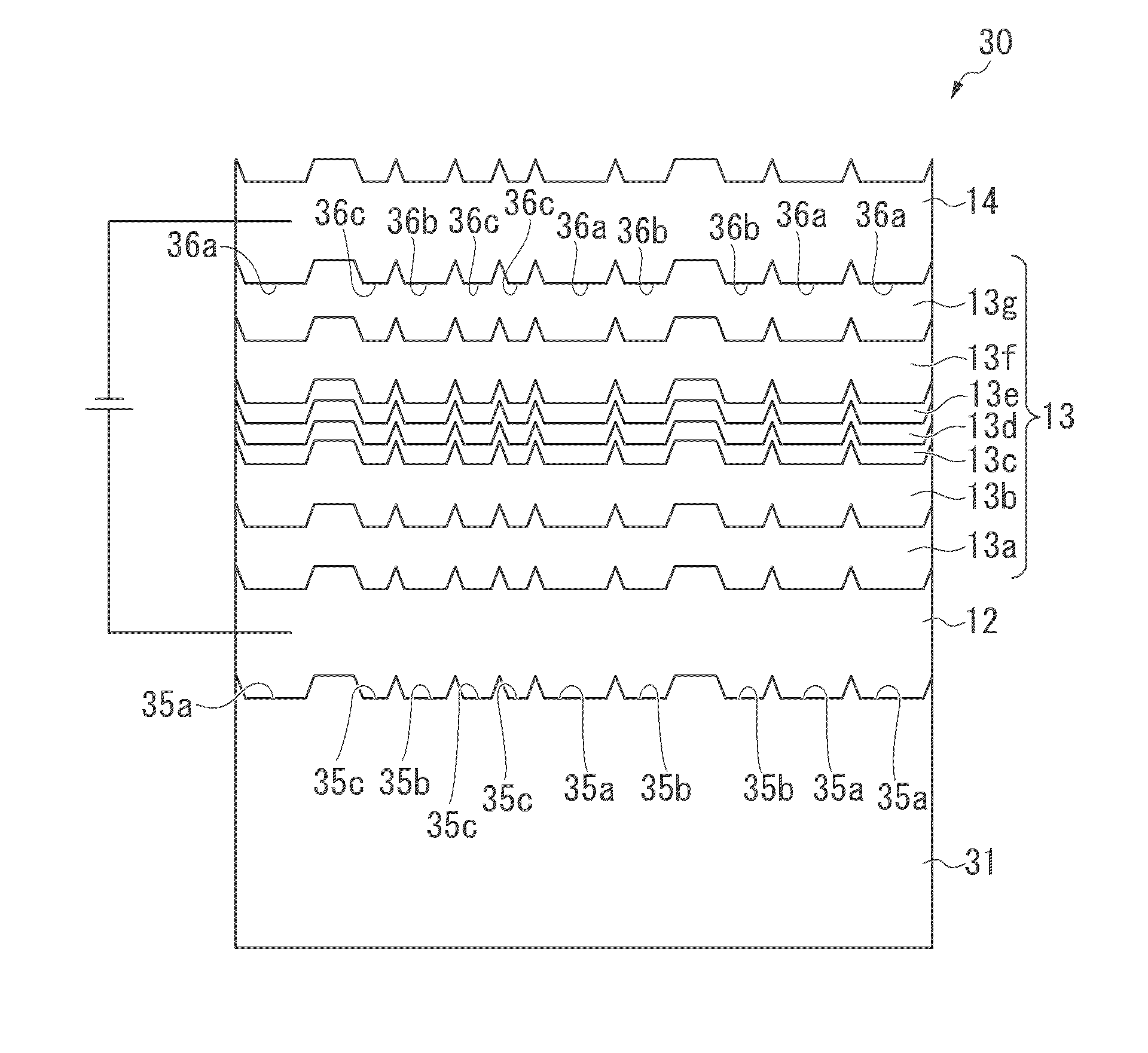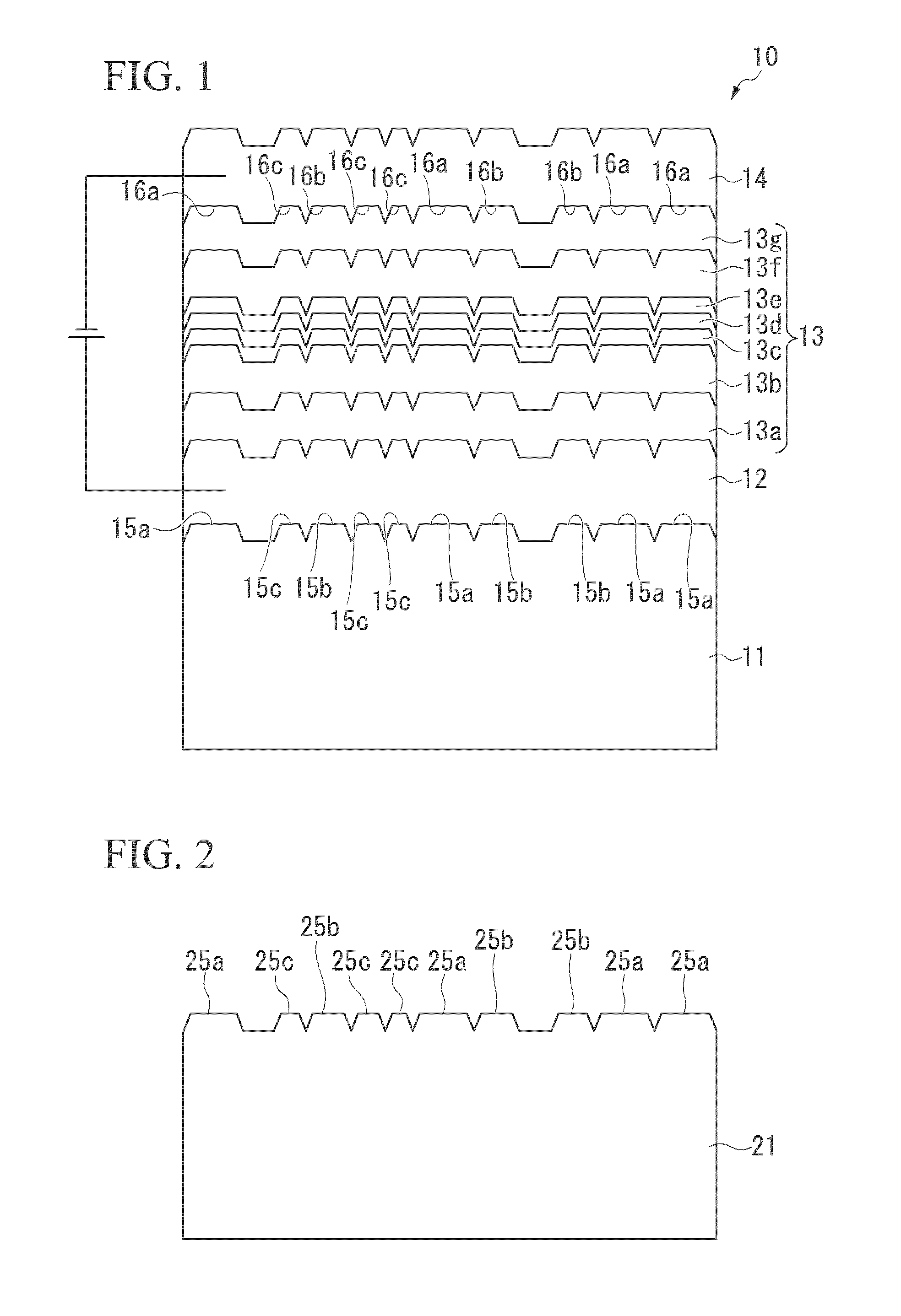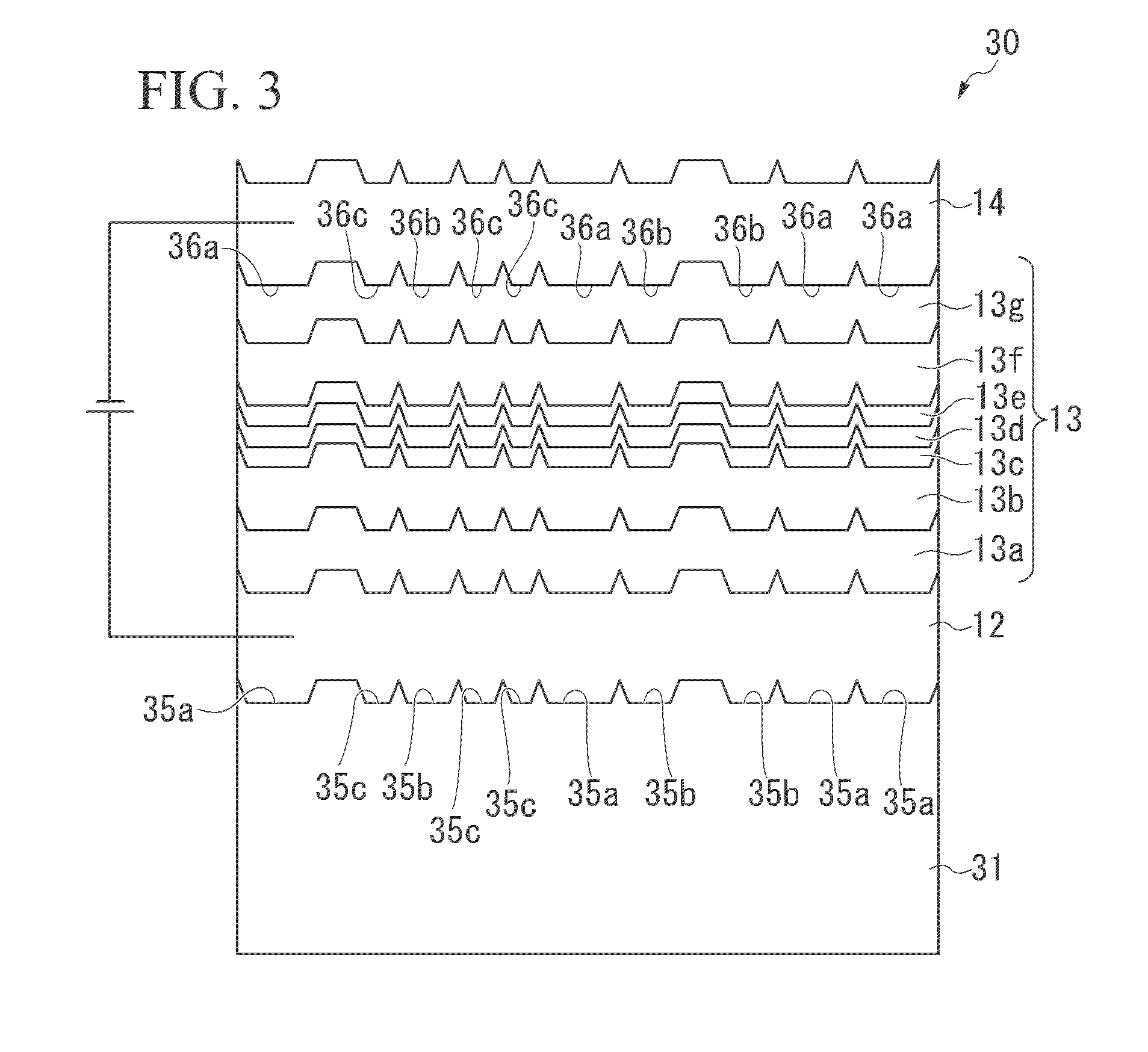Organic light-emitting diode manufacturing method, organic light-emitting diode, image display device, illumination device, and substrate
a light-emitting diode and manufacturing method technology, applied in thermoelectric devices, layered products, transportation and packaging, etc., can solve the problems of low light extraction efficiency, reduced light extraction efficiency, and reduced light extraction efficiency, and achieve excellent light extraction efficiency and light extraction efficiency. excellent
- Summary
- Abstract
- Description
- Claims
- Application Information
AI Technical Summary
Benefits of technology
Problems solved by technology
Method used
Image
Examples
first embodiment
[0073]A schematic cross sectional view describing the structure of an organic light-emitting diode 10 manufactured using the present embodiment is illustrated in FIG. 1.
[0074]The organic light-emitting diode 10 is an organic light-emitting diode having a layer structure generally referred to as a bottom emission type structure, and has an anode conductive layer 12 formed from a transparent conductor, an EL layer 13, and a cathode conductive layer (metal layer) 14 formed from a metal stacked sequentially on top of a transparent substrate 11.
[0075]The surface of the transparent substrate 11 on the side that the anode conductive layer 12 is stacked is provided with an uneven structure in which a plurality of truncated cone-shaped convex portions 15a, 15b and 15c having mutually different diameters are arranged randomly in two dimensions. This uneven structure is described below in further detail.
[0076]The EL layer 13 is composed of a hole injection layer 13a, a hole transport layer 13b...
example 1
[0310]A 5.0% by mass aqueous dispersion (dispersed liquid) of a spherical colloidal silica having an average particle size A1 of 250.6 nm and a coefficient of variation of the particle size of 3.0%, a 5.0% by mass aqueous dispersion (dispersed liquid) of a spherical colloidal silica having an average particle size A2 of 150.1 nm and a coefficient of variation of the particle size of 7.4%, and a 5.0% by mass aqueous dispersion (dispersed liquid) of a spherical colloidal silica having an average particle size A3 of 90.2 nm and a coefficient of variation of the particle size of 9.4% were prepared. The average particle size and the coefficient of variation of the particle size were determined from the peak obtained by fitting the particle size distribution, determined by the particle dynamic light scattering method using a Zetasizer Nano-ZS manufactured by Malvern Instruments Ltd., to a Gaussian curve.
[0311]These three particle dispersions were each filtered through a membrane filter ha...
example 2
[0331]With the exception of using a mixture prepared by mixing a spherical colloidal silica having an average particle size A1 of 301.3 nm and a coefficient of variation of the particle size of 3.2%, a spherical colloidal silica having an average particle size A2 of 202.5 nm and a coefficient of variation of the particle size of 4.6%, and a spherical colloidal silica having an average particle size A3 of 90.2 nm and a coefficient of variation of the particle size of 9.4%, such that the occupied surface area ratio upon spreading the particles on the water surface was 1:1:1, exactly the same operations as Example 1 were used to coat the mixed particles onto the surface of a quartz substrate to prepare a quartz substrate having an uneven structure, and subsequently stack each of the electrode layers and the EL layer on the uneven structure using the same thicknesses and the same materials as Example 1, thus completing preparation of a bottom emission white organic light-emitting diode....
PUM
 Login to View More
Login to View More Abstract
Description
Claims
Application Information
 Login to View More
Login to View More - R&D
- Intellectual Property
- Life Sciences
- Materials
- Tech Scout
- Unparalleled Data Quality
- Higher Quality Content
- 60% Fewer Hallucinations
Browse by: Latest US Patents, China's latest patents, Technical Efficacy Thesaurus, Application Domain, Technology Topic, Popular Technical Reports.
© 2025 PatSnap. All rights reserved.Legal|Privacy policy|Modern Slavery Act Transparency Statement|Sitemap|About US| Contact US: help@patsnap.com



